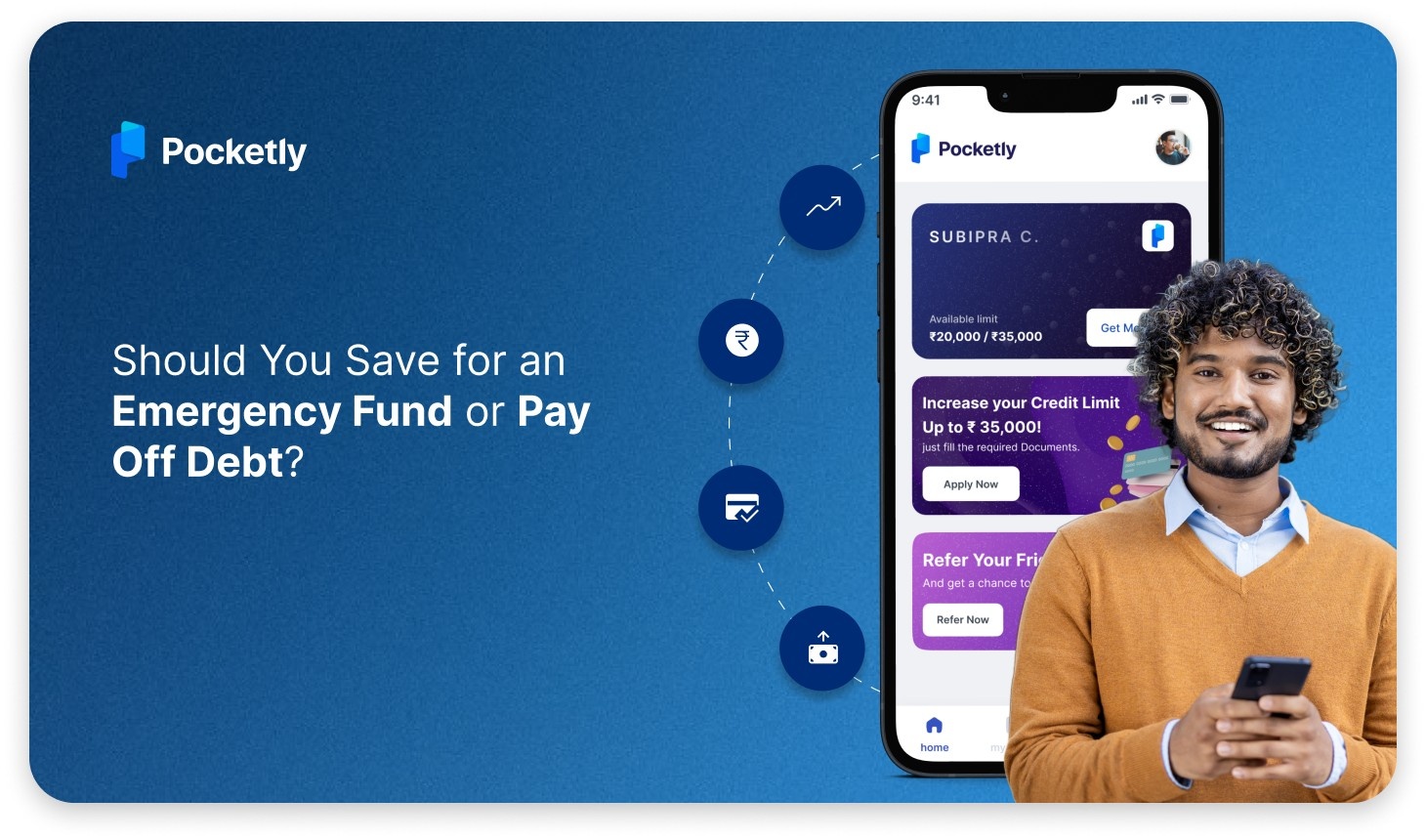
Ever wonder how Non-Banking Financial Companies, or NBFCs, operate and what role they play in the financial world? Don’t worry, you're not alone. While they might not get as much attention as traditional banks, NBFCs are vital players in India’s economy, offering everything from retail loans to investment services.
NBFCs are a great loan option for students and professionals due to their flexible loan structures, quicker approval processes, and lenient eligibility criteria. With faster processing times and an online-first approach, NBFCs provide a more convenient and efficient way to secure loans, especially for young borrowers looking for hassle-free financing solutions.
Let’s break it down in simple terms so you can understand how NBFCs work and why they matter, especially for young professionals and first-time borrowers like yourself.
What Are Non-Banking Financial Companies (NBFCs)?
NBFCs are financial institutions that offer many of the services you’d expect from a bank, but they don’t have a full banking license. They can’t accept regular savings deposits, but they’re involved in providing loans, asset management, and even venture capital.
In simpler terms, NBFCs help people and businesses get access to money, especially when they might not qualify for traditional bank loans.
Here are some important things to know about NBFCs:
- Regulated by RBI: NBFCs are regulated by the Reserve Bank of India (RBI), ensuring they follow strict guidelines to maintain financial stability and consumer protection.
- Wide Range of Services: NBFCs provide services like loans, leasing, hire-purchase, and insurance. They are also involved in infrastructure financing, retail financing, and microfinance.
- No Demand Deposits: Unlike banks, NBFCs are not allowed to accept demand deposits, such as savings or current accounts.
- Credit Access for All: NBFCs play a vital role in promoting financial inclusion, as they cater to individuals and businesses that might not qualify for loans from traditional banks due to limited credit history or other restrictions.
Key Functions and Services of NBFCs:
- Retail Financing: Personal loans, auto loans, and even home loans.
- Infrastructure Financing: Funding for big projects like highways and airports.
- Microfinance: Small loans to individuals or businesses that need financial support.
- Investment Services: Managing and investing funds for individuals and companies.
Criteria for NBFC Classification
Not all NBFCs are the same. To be classified as an NBFC, companies must meet certain criteria, such as:
- Financial Asset Composition: A large part of the company’s assets must be financial (like loans or investments).
- Income from Financial Assets: At least 50% of their income must come from these assets.
- Prohibited Business Activities: NBFCs are restricted from certain business activities like dealing in agriculture or industrial finance.
Examples of NBFCs in India
Here are some well-known Non-Banking Financial Companies (NBFCs) in India that offer a wide range of financial services:
- Fairassets Technologies
- NDX Financial Services
- Speel Finance Company
- Bajaj Finserv
- Muthoot Finance Ltd
- Tata Capital Financial Services
- L&T Finance Holdings Ltd
- Aditya Birla Finance Ltd
These companies play a significant role in providing various financial services to individuals and businesses across the country.
Key Differences Between Banks and NBFCs
Banks and Non-Banking Financial Companies (NBFCs) both offer financial services, but they operate differently. Here’s a quick, easy-to-understand comparison of their key features:
| Feature | Banks | NBFCs |
|---|---|---|
| Deposit Acceptance | Banks can accept savings and current deposits from customers. | NBFCs are not allowed to accept demand deposits (like savings accounts). |
| Regulation Authority | Regulated by the Reserve Bank of India (RBI) under the Banking Regulation Act. | Primarily regulated by RBI, but with less stringent regulations compared to banks. |
| Payment and Settlement System | Banks are part of the payment system, allowing customers to issue cheques and use payment gateways. | NBFCs can’t issue cheques and aren’t part of the payment system. |
| Credit Creation | Banks create credit by issuing loans against deposits, effectively multiplying money. | NBFCs can issue loans but can’t create credit by issuing new deposits. |
| Foreign Exchange Services | Banks can deal with foreign exchange, offering currency conversion and other services. | NBFCs cannot offer foreign exchange services. |
Types of NBFCs: What You Need to Know
NBFCs aren't all the same, they come in various types, each serving different needs. Let’s break down the most common types of NBFCs and what they do, in simple terms.
1. Asset Finance Company (AFC)
Ever needed a loan to buy a car or some new machinery for your business? That’s where an Asset Finance Company (AFC) comes in. AFCs specialize in helping people and businesses finance specific assets like vehicles, equipment, or other large purchases.
- How it helps: Loans for vehicles, machinery, or equipment.
- Who benefits: Individuals buying cars or businesses needing new equipment.
2. Microfinance Institution (MFI)
Sometimes, traditional banks overlook the little guys—people who don’t have high credit scores or steady incomes. That’s where Microfinance Institutions (MFIs) come to the rescue. MFIs provide small loans to low-income individuals and small businesses, often in rural areas.
- How it helps: Small loans are available to people who can't get bank loans.
- Who benefits: Low-income individuals, small businesses, rural communities.
3. Investment Company (IC)
Want someone to manage your investments? An Investment Company (IC) is like your financial wingman. These NBFCs manage portfolios of securities—like stocks, bonds, and mutual funds—for their clients. If you’re looking to build your financial future but aren’t sure where to start, ICs have got your back.
- How it helps: Manages investments in stocks, bonds, and mutual funds.
- Who benefits: Individuals and businesses looking to grow their wealth through investments.
4. Mortgage Guarantee Company (MGC)
Buying a house is a huge financial commitment, and sometimes it feels impossible to get approved for a loan. That’s where a Mortgage Guarantee Company (MGC) steps in. These NBFCs guarantee mortgage loans, meaning they promise to cover the lender’s risk in case you default on your home loan. This guarantee makes it easier for lenders to approve your home loan, giving you the chance to own your dream home without as much stress.
- How it helps: Provides a guarantee for home loans, reducing lender risk.
- Who benefits: Individuals looking to buy a home who need help getting approved for a mortgage.
Each type of NBFC plays a unique role in the financial ecosystem, helping different types of borrowers and investors meet their goals.
Functions and Services of NBFCs: What Do They Offer?
NBFCs are like financial superheroes—they do a lot more than just give out loans. Let’s take a closer look at the key functions and services NBFCs provide, and how they make a difference in everyday financial life.
1. Retail Financing
Ever bought a car or home with the help of a loan? That’s retail financing in action! NBFCs help individuals finance big-ticket purchases like cars, homes, or even consumer goods. These loans make it easier for people to afford the things they need or want, without having to pay the full price upfront.
- How it helps: Provides loans for personal purchases like vehicles, homes, and appliances.
- Who benefits: Individuals looking for affordable payment plans for large purchases.
2. Infrastructure Financing
Think of large infrastructure projects—like building highways, airports, or power plants. These massive projects need a lot of funding, and NBFCs step in to provide infrastructure financing.
- How it helps: Funds major projects such as roads, bridges, and airports.
- Who benefits: Governments, construction companies, and the general public (through improved infrastructure).
3. Trade Finance
For businesses engaged in importing and exporting goods, trade finance is crucial. NBFCs provide the funds businesses need to handle large transactions, helping them manage their cash flow, pay suppliers, and keep their business running smoothly.
- How it helps: Provides financial support for businesses involved in international trade.
- Who benefits: Businesses that import/export goods and need quick access to funds.
4. Asset Management
If you want your money to grow, asset management services offered by NBFCs can help. They manage your investments—whether it’s stocks, bonds, or real estate—ensuring that your portfolio grows over time. It's like having a personal finance expert managing your money for you.
- How it helps: Manages investments in stocks, bonds, and real estate.
- Who benefits: Individuals and businesses looking to grow their wealth through strategic investments.
5. Microfinance
For those who don’t have access to traditional bank loans, microfinance is a game-changer. NBFCs provide small loans to low-income individuals or small businesses, giving them the chance to start or grow their ventures.
- How it helps: Provides small loans to low-income individuals and businesses.
- Who benefits: Individuals and small businesses in need of financial support, particularly in rural areas.
6. Investment Banking Services
NBFCs offer investment banking services to help businesses raise capital, manage mergers, or navigate acquisitions. Whether it's helping companies go public or guiding them through complex financial transactions, NBFCs act as advisors and facilitators in the world of corporate finance.
- How it helps: Assists businesses in raising capital and handling mergers/acquisitions.
- Who benefits: Corporations seeking financial advice or investment opportunities.
7. Insurance Services
NBFCs are not just about loans and investments—they also offer insurance services. Whether it’s life insurance, health insurance, or asset protection, NBFCs can provide a variety of insurance policies to protect individuals and businesses from financial risks.
- How it helps: Offers a range of insurance products to protect people and businesses.
- Who benefits: Individuals and businesses seeking financial protection from unforeseen events.
How NBFCs Raise Money?
NBFCs, like traditional banks, need a steady flow of funds to offer loans, investments, and other services. But how do they actually raise this money? Let's break it down in simple terms:
1. Low-Interest Long Term Loans from Banks
NBFCs often borrow money from regular banks at lower interest rates. These loans are usually long-term, meaning NBFCs can use the funds for several years to finance their operations. They then lend this money out at higher interest rates, making a profit from the difference.
- Why it works: NBFCs get access to large sums of money over long periods, giving them the flexibility to offer a variety of financial products.
2. Foreign Direct Investment (FDI)
NBFCs can attract foreign investments through Foreign Direct Investment (FDI). This is when foreign companies or individuals invest in an NBFC by providing funds, usually in exchange for some ownership or equity. FDI helps NBFCs expand and grow, especially in sectors like infrastructure and retail lending.
- Why it works: It brings in big money from international markets, allowing NBFCs to scale up their services.
3. Issuance of Commercial Paper
Ever heard of Commercial Paper (CP)? It’s essentially a short-term loan that NBFCs can issue to raise quick funds. These are unsecured loans, meaning NBFCs don’t need to offer collateral, but they are only issued for short durations, like 3 to 12 months. It’s a fast way for NBFCs to gather money to meet immediate financial needs.
- Why it works: It’s quick and helps NBFCs manage short-term cash flow issues.
4. Issuance of Bonds
NBFCs can also raise money by issuing bonds to investors. A bond is a type of loan where the NBFC agrees to pay back the borrowed amount with interest over a specified period. These bonds are attractive to investors looking for fixed returns, and they provide NBFCs with the funds they need to operate.
- Why it works: It’s a reliable way to gather long-term funds with fixed interest rates.
5. Securitization of Loans
In securitization, NBFCs bundle up some of their loans (like home loans or car loans) and sell them as securities to investors. This helps NBFCs free up capital by transferring the risk to investors, while still earning a fee for servicing the loans.
- Why it works: It allows NBFCs to raise money while reducing their risk, making it a win-win for both NBFCs and investors.
Curious to find out more about NBFCs working mechanism and how it’s carried out? Let’s find it out in the section below!
Also you can read our guide on Non Bank Personal Loan Interest Rates in India 2024
Operating Mechanism of NBFCs
Ever wonder how NBFCs actually work behind the scenes? Here’s a quick breakdown:
1. Licensing and Regulation
Before NBFCs can start offering financial services, they need a green light from the Reserve Bank of India (RBI). This ensures they operate under strict guidelines, protecting both the company and you, the customer.
- Why it matters: It keeps NBFCs safe and trustworthy.
Here are the specific requirements and regulations that NBFCs need to comply with:
- Registration: NBFCs must register under the Companies Act, 1956 (now Companies Act, 2013) and obtain a certificate of registration from the RBI under Section 45-IA of the RBI Act, 1934.
- RBI Prudential Norms: NBFCs must comply with the RBI’s Prudential Norms, which regulate aspects such as capital adequacy, asset classification, provisioning for bad loans, and exposure limits.
- Regulatory Framework: NBFCs must follow the Non-Banking Financial Companies Prudential Norms (Reserve Bank) Directions, 1998, which govern their capital adequacy, risk management, and financial disclosures.
2. Fund Mobilization and Investment
NBFCs gather money through loans, investments, or bonds and then lend it out to individuals and businesses or invest it in projects. This is how they fuel financial growth across different sectors.
- Why it matters: It allows NBFCs to offer a variety of financial services.
3. Risk Management and Prudential Norms
NBFCs need to be smart about who they lend to. They follow rules that ensure they don’t take on too much risk, which helps them stay financially stable and avoid big losses.
- Why it matters: It protects the company from bad loans and keeps them running smoothly.
4. Compliance and Reporting
NBFCs must regularly submit reports to the RBI and stay compliant with regulations. This ensures they’re operating ethically and maintaining transparency.
- Why it matters: It builds trust with both the government and their customers.
Let’s understand what are the roles and responsibilities of NBFCs in the economy sectors.
The Crucial Role of NBFCs in the Economy
NBFCs are more than just lenders—they’re powerhouses driving financial growth and inclusion across the country. Here’s how they help keep the wheels of the economy turning:
1. Promoting Financial Inclusion
NBFCs are champions of financial inclusion, reaching people and businesses that traditional banks often overlook. They provide access to loans, insurance, and other financial services in areas where banks don’t operate, like rural regions or among lower-income populations.
- Why it matters: By serving underserved communities, NBFCs ensure that everyone—from farmers to small business owners—has the chance to access the funds they need to improve their lives and grow their businesses.
2. Providing Easy Credit Access
Need a personal loan, business financing, or vehicle loan? NBFCs are often faster and more flexible than traditional banks when it comes to offering credit access. They’re known for their quick and easy processes, making them the go-to option for people who need financing fast, whether for a new business or an unexpected expense.
- Why it matters: NBFCs help fuel economic growth by making it easier for individuals and businesses to secure the funding they need, boosting entrepreneurship and driving personal financial growth.
3. Offering Wealth Management Services
Many NBFCs do more than just lending—they also offer wealth management services. These services help individuals and businesses invest wisely, manage their finances, and grow their wealth. Whether you’re looking to invest in stocks, bonds, or real estate,
- Why it matters: Wealth management services allow people to grow their money over time, creating long-term financial stability and security.
4. Quick Loan Sanctions with Tech Solutions
NBFCs leverage technology to offer quick loan sanctions, often approving loans within minutes via digital platforms. From your smartphone, you can apply, get approved, and receive funds quickly, making NBFCs the go-to option for urgent financial needs.
- Why it matters: The ability to approve and disburse loans quickly is a game-changer for people facing emergencies or businesses needing fast capital to seize opportunities.
RBI Guidelines for NBFCs: What You Need to Know
The Reserve Bank of India (RBI) sets specific rules to ensure that Non-Banking Financial Companies (NBFCs) operate safely and efficiently. These guidelines help protect both the companies and their customers. Here's a quick breakdown of the key RBI guidelines for NBFCs:
- Registration: All NBFCs must be registered with the RBI to legally operate in India.
- Minimum Capital Requirement: NBFCs need to maintain a minimum net-owned fund (capital) of ₹2 crores to ensure financial stability.
- No Demand Deposits: Unlike banks, NBFCs are not allowed to accept demand deposits, such as savings or current account deposits.
- Prudential Norms: NBFCs must follow strict risk management rules to avoid lending too much or to high-risk borrowers. This includes maintaining a certain percentage of capital against their loans.
- Minimum Deposit: NBFCs cannot accept demand deposits. Deposit-taking NBFCs must follow the guideline of 1.5 times their NOF for accepting deposits.
- Minimum Reserves: NBFCs must maintain reserves of more than 5% but less than 25% of their outstanding deposits at the end of the second preceding quarter to ensure adequate liquidity and financial stability.
- Loan Agreements: Every NBFC must provide a copy of the loan agreement to borrowers at the time of loan sanction or disbursement, ensuring transparency in all financial dealings.
These guidelines ensure that NBFCs operate in a secure, transparent, and customer-friendly manner, helping maintain trust in the financial system.
Top 5 Instant Loan Apps Partnered With NBFCs in India
Here’s a quick comparison of the top 5 instant loan apps that are partnered with NBFCs, highlighting their key features:
| Loan App | Key Features | Loan Amount Range | Repayment Tenure |
|---|---|---|---|
| Pocketly | - Designed for students and young professionals - Minimal documentation required
| ₹1,000 to ₹25,000 | Up to 6 months |
| Bajaj Finserv | - Instant personal loans - Flexi loan options - Quick disbursal
| ₹1,000 to ₹25 lakhs | Up to 60 months |
| CASHe | - AI-based approval process - No physical documentation - Offers credit line
| ₹1,000 to ₹4 lakhs | Up to 12 months |
| MoneyTap | - Credit line and personal loan options - Paperless process - Flexible repayment
| ₹3,000 to ₹5 lakhs | Up to 36 months |
| KreditBee | - Designed for young professionals - Minimal documentation - Quick approval process
| ₹1,000 to ₹2 lakhs | Up to 24 months |
These apps, operated by NBFCs, provide fast and convenient loan solutions, each catering to different needs, from small loans for students to larger credit options for professionals.
You may also learn more about which instant apps to choose with our guide Best Instant Personal Loan Apps in India 2024
For the days when you need instant cash and for that, when it comes to choosing an instant loan app, Pocketly stands out as one of the best digital lending platforms. Let’s find out how!
Why is Pocketly the Best App for Instant Loans?
What makes Pocketly special? For starters, it’s a digital lending platform built with today’s needs in mind—especially for students and young professionals.
If you're 18 or older, Pocketly is one of the few platforms that offer you quick and easy access to loans, making it a go-to for young adults who need instant financial help.
Here’s why Pocketly is a game-changer:
- Loans for 18+: Most platforms require you to be at least 21, but Pocketly recognises that young adults also have financial needs. Whether it’s for education, emergencies, or personal expenses, Pocketly offers instant loans to those aged 18 and above.
- Fast Approval: The app provides quick, seamless approvals, often within minutes, so you’re not left waiting when you need funds urgently.
- Minimal Documentation: You don’t have to stress about gathering loads of documents. Pocketly keeps it simple with just the basics, like your Aadhaar and PAN cards.
- Flexible Loan Amounts: Need ₹1000 or ₹10,000? Pocketly lets you borrow small amounts, perfect for covering everyday expenses or emergencies without the burden of a massive loan.
- User-Friendly: The entire process, from applying to receiving your loan, happens online. It’s straightforward, intuitive, and can be done in just a few taps on your phone.
With Pocketly, it’s not just about offering a loan, it’s about making the process stress-free, fast, and accessible. Whether you’re a student or a young professional, Pocketly has your back!
Conclusion
In this blog, we delved into how NBFCs operate and their pivotal role in India’s economy, highlighting their diverse services and unique advantages over traditional banks. We also explored the top instant loan apps, with Pocketly emerging as the standout choice for young adults seeking quick and hassle-free financial solutions.
When you need fast cash without the usual headaches, Pocketly is here to help. Whether you’re 18 or older, a student, or a young professional, Pocketly offers instant loans with minimal documentation and flexible repayment options tailored just for you.
Ready to simplify your financial journey? Download the Pocketly app today and get the funds you need in minutes—quick, easy, and stress-free!
FAQs
How do Non-Banking Financial Companies (NBFCs) work?
NBFCs provide financial services like loans and investments without holding a full banking license. They raise funds from sources like bank loans and investments to offer services to individuals and businesses.
What are the main services provided by NBFCs?
NBFCs offer a variety of services, including:
- Retail Financing: Personal, auto, and home loans
- Infrastructure Financing: Funding for large projects
- Trade Finance: Support for import and export businesses
- Asset Management: Managing investments in stocks and real estate
- Microfinance: Small loans for low-income individuals
How do NBFCs make money?
NBFCs earn through interest on loans, fees for services, returns on investments, and by charging processing fees and penalties for late payments.
How is an NBFC different from a bank?
Unlike banks, NBFCs cannot accept demand deposits like savings accounts and are not part of the payment system. They are regulated differently by the RBI and cannot offer services such as issuing cheques or dealing in foreign exchange.
Is an NBFC a private bank?
No, NBFCs are not banks. They provide similar financial services without holding a full banking license and cannot accept demand deposits like traditional banks.
Why choose Pocketly for an instant ₹10,000 loan?
Pocketly offers fast approvals, minimal documentation, and loans starting from ₹1000 up to ₹10,000, making it perfect for young adults and professionals needing quick financial support.
Do I need a high credit score to get a loan from Pocketly?
No, Pocketly considers multiple factors beyond just your credit score, making it easier for individuals with low or no credit scores to get approved.
















